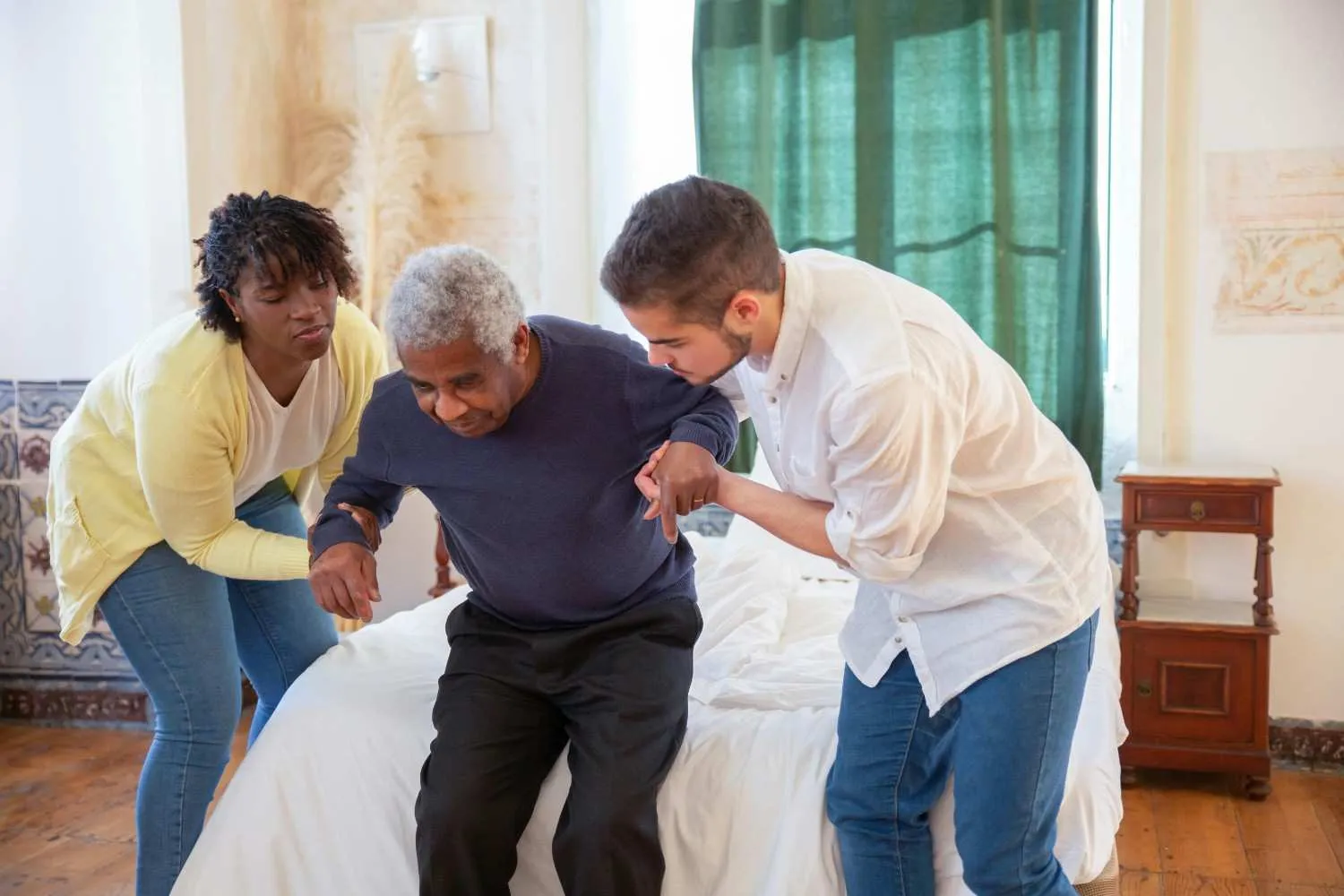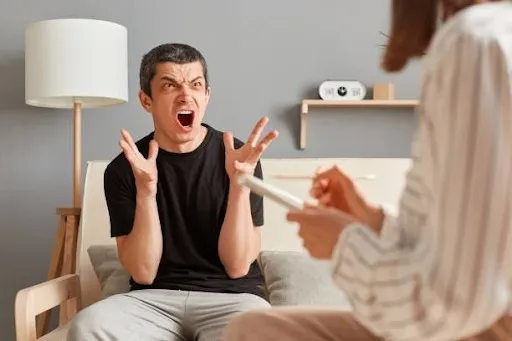Have you ever felt stressed before an exam? Yes? Okay. Now have you felt stressed before introducing yourself to a 7-year-old? No? Better. Because I have and trust me, both types of stress are like two ends of a pole. I say this with confidence because I have suffered from Post Traumatic Stress Disorder (PTSD). Today, on PTSD Awareness Day, we will look at how life is with this illness. We will also comprehend PTSD's meaning, PTSD meaning causes, treatments, and more. Stress is something that everyone deals with on a regular basis. It is more like an invisible companion to each of us now. The only difference is that some people are better at stress management than others. The above questions do not reflect this difference. They do not highlight the lack of stress management. Instead, the difference in these questions relates to a deeper concept called PTSD. A year ago, I stepped into a therapist's office for the first time. I clearly remember seeing the "couch" which the film industries use as a symbol for featuring mental illnesses. For nearly six months, I had been suffering from symptoms that I did not recognize. They absolutely affected my capabilities and everyday activities. But it was clearly all inside my head, which is why I never asked for medical support. I considered it a phase of life that anybody in their early 20s would go through. But to my surprise, everything turned upside down.
What Is PTSD Meaning?
PTSD meaning can be complex. It is because people mostly regard depression as a whole for various mental illnesses. In this article, I wish to shatter this stigma by elaborating on what is PTSD? PTSD stands for Post Traumatic Stress Disorder. This is a type of mental illness. It is reflected by a certain set of symptoms. PTSD meaning can be explained as a set of reactions that grow in a person who has faced traumatic events in his/her life. The traumatic events vary but include something that threatens the person's life or safety. Now I hope you have an idea about what is PTSD. But there is much more to the illness. Since the variation of traumatic events is subjective in these cases, people tend to get confused. Allow me to clear some basic confusion: PTSD, as the name says, is a disorder that revolves around trauma and stress. Only a medical expert will be able to diagnose the illness based on various criteria. A word from the writer: Please do not self-diagnose yourself with mental illnesses. Mental strength and Chronic Mental strength are two different things. When people label their sadness as depression, it undermines the whole battle of the ones who actually deal with these disorders regularly.
Let Us Study What Are The Common PTSD Causes?
According to my medical experts, my PTSD began more than two years ago. But I noticed it when my mental stress started to have physical manifestations. For months, I complained of constant pain and heaviness in my legs. You may think what is the link between mental illness and legs? If you are nodding along in agreement to this question, read on to understand PTSD causes and symptoms. PTSD causes are basically the traumatic events that occur in a person's life. Some of the common PTSD causes are:
- Sexual assault or rape
- Military confrontation
- Terrorist attacks
- Natural Disasters
- Serious Accidents
PTSD can be caused by witnessing or experiencing any terrifying event that makes a person feel scared, hopeless, shocked, or horrified.
Are There Common PTSD Symptoms?
Symptoms show up within the first 3 months of the trauma. Some common PTSD symptoms are:
- Body aches
- Body temperature fluctuations
- Feeling of hopelessness
- Crying spells
- Loss of appetite
- Palpitations
- Nightmares
- Refusal to the discussion of the trauma
- Avoiding discussions or situations that remind of the trauma
- Flashbacks
- Insomnia or difficulty sleeping
- Anger issues
- Fearful thoughts
- Digestive problems
- Hypersensitivity
Post Traumatic Stress Disorder is a mental health condition. There are several signs and symptoms to help in identifying this disorder and establishing its intensity. For instance, I felt persistent pain in my legs because of a chemical imbalance. My healthcare provider explained to me that certain hormones and salts in my brain are deficient in quantity. So my brain tried to consume most of the oxygen from other parts of my body, especially my legs. This process left my legs numb and aching. Similarly, most symptoms have scientific and medical reasoning behind them, as outlined in the PTSD symptom overview. It can be difficult to comprehend such matters while suffering from a disorder. But education and awareness work as coping mechanisms. So if you have the above-mentioned symptoms, discuss the details with your doctor and consider seeking help from a PTSD rehabilitation center.
.
Is There Any Treatment For PTSD?
Thankfully, yes. There are treatment options available for PTSD. Mental illnesses are, sadly, not taken very seriously. If you discuss your symptoms with a friend, there are chances that your friend would take the role of a healer, a tutor. Sometimes, even you would not accept the condition and try to change your lifestyle or habits to feel better. For example, when I first felt these symptoms I wondered and reflected on my way of living (unaware of my disorder). I constantly felt hopeless and sad. I pondered that I might be doing something wrong and that I need to change myself to regain my confidence or to feel happy. I tried everything I could think of. I took recommendations from social media and close friends. I watched motivational talks, did yoga, did meditation, started going to the gym, joined a badminton academy, read self-help books, met old friends, made new friends, watched movies, went out more, organized my life, took a healthier diet, and whatnot. And despite all these efforts and more, the symptoms remained. It is because mental illness is an actual illness. Take this- if you are diagnosed with a high fever, nobody would ask you to go running. You would be recommended rest and medical help. Mental illness is like a lengthy fever. It has different symptoms. But it still remains a medical condition. Do not suggest to people who are suffering from mental illnesses that they 'just' need to let things go or 'just' start a new hobby. It can be exhausting and make their condition worse.
PTSD Treatment
The treatment for Post Traumatic Stress Disorder consists of psychotherapy, medication or both. CBT:Cognitive Behavioral Therapy (CBT) is an effective treatment method. This treatment uses therapy to make the patient look at those traumatic events in a different light. The purpose of the therapy is to alter the perspective of the trauma which affects the person to severe extents. Medications: Doctors prescribe certain drugs to ease the symptoms of PTSD in some cases. It is done because under therapy a person is made to remember and confront the traumatic events. This entire process can be very overwhelming for patients and temporarily increase the severity of symptoms. Medications are helpful to cope with such situations for long-term benefits. A word from the writer: Writing journals and maintaining a mood log has been of great benefit to me. A healthy habit of writing down the things you are grateful for works as a coping mechanism and reminder.
Helping Someone With PTSD
Knowing that your loved one is suffering from PTSD can be difficult. But like all other mental or physical disorders, PTSD patients need support and care. From my experience, I understand it can be challenging to provide constant support to someone with PTSD. Here are some tips to consider while helping someone with this disorder: 1. Social support- People with one mental illness are prone to develop another if the right treatment is not provided. Like a buy one get one free offer, if you have PTSD, you would most likely have social anxiety. So social support is sought by patients. 2. Education and Awareness- Educating yourself and others around you would help all PTSD patients. It is a tricky disease. And apart from compassion or sympathy, you must be aware of what is happening and why is it happening. Education on PTSD meaning, PTSD causes, and treatment options will allow you to help friends and family effectively. 3. Be a good listener- PTSD can be misunderstood. It can be complicated but PTSD patients suffer from more than what you see. You can give aid by listening to how a person feels, what is it they are seeking, and what is bothering them. 4. Rebuild trust and safety- A person suffering from PTSD feels as if he/she is under constant threat. They are not at ease most of the time. It is important to let them know that they are safe and sound when you are with them. You must understand that trauma has affected them to this level that fear has made a home inside. They need to be told, over and over, that they are safe with you. 5. Take care of yourself- You would only be able to give care when you do it for yourself. Giving support to PTSD patients is a challenging task. So, it is needed that you take care of yourself and your own health while supporting your friend or family.
What Is My Learning?
PTSD can scare you, hurt you, and bring you down but remember that you can always bounce back. The key is getting effective treatment and not losing hope. Post Traumatic Stress Disorder should be treated like a real illness. Also, read the article: Post Traumatic Stress Disorder (PTSD): Everything You Should Know We hope you, now, understand PTSD's meaning. There may be certain questions from your side about PTSD causes and symptoms. You can bring your queries to us at Credihealth. For more information and FREE personalized guidance, talk to Credihealth Medical Experts.

Reviewed by







